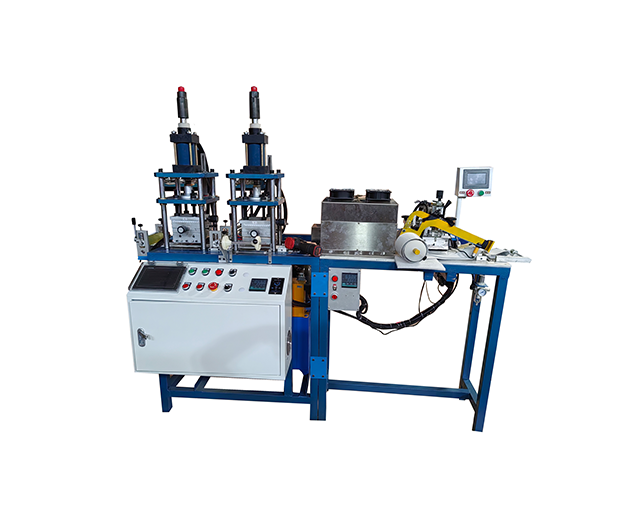Time:2025-05-15 Views:1 source:News

Ultrasonic embossing machines are innovative devices that utilize ultrasonic technology to create embossed patterns on a variety of materials. The working principle of these machines is based on the conversion of electrical energy into high - frequency mechanical vibrations, which are then used to heat and fuse the materials at specific points to form the desired patterns.
The process begins with an ultrasonic generator. This device takes in standard electrical power, usually from a mains supply, and converts it into high - frequency electrical signals. The frequency of these signals typically ranges from 20 kHz to 40 kHz, well above the audible range of human hearing. The high - frequency electrical signals are then transmitted to a transducer.
The transducer is a crucial component of the ultrasonic embossing machine. It is designed to convert the high - frequency electrical signals received from the generator into mechanical vibrations. This is achieved through the piezoelectric effect. Piezoelectric materials within the transducer expand and contract rapidly in response to the alternating electrical current, generating high - frequency mechanical vibrations. These vibrations are then transferred to a welding horn, also known as a sonotrode.
The welding horn is shaped and designed to focus and direct the ultrasonic vibrations onto the material to be embossed. When the vibrating welding horn comes into contact with the material, the high - frequency vibrations cause the molecules within the material to oscillate rapidly. This rapid molecular movement generates heat due to internal friction within the material. In the case of thermoplastic materials, the heat generated is sufficient to raise the temperature of the material to its melting point in the areas where the welding horn is applying pressure.
Simultaneously, a patterned embossing die is brought into contact with the material under pressure. As the material softens due to the heat generated by the ultrasonic vibrations, the embossing die presses the pattern onto the material. Once the material cools and solidifies, the embossed pattern remains permanently. For non - thermoplastic materials such as certain fabrics, the ultrasonic vibrations can still cause the fibers to bond or re - arrange in a way that creates a visible and tactile embossed effect. The pressure applied during the embossing process, along with the frequency and amplitude of the ultrasonic vibrations, can be adjusted to control the depth and clarity of the embossed pattern, allowing for a wide range of design possibilities on different types of materials.
Read recommendations:
spin ultrasonic plastic welding machine purifier filter
Complete control over products allows us to ensure our customers receive the best qualityprices and service. We take great pride in everything that we do in our factory.
